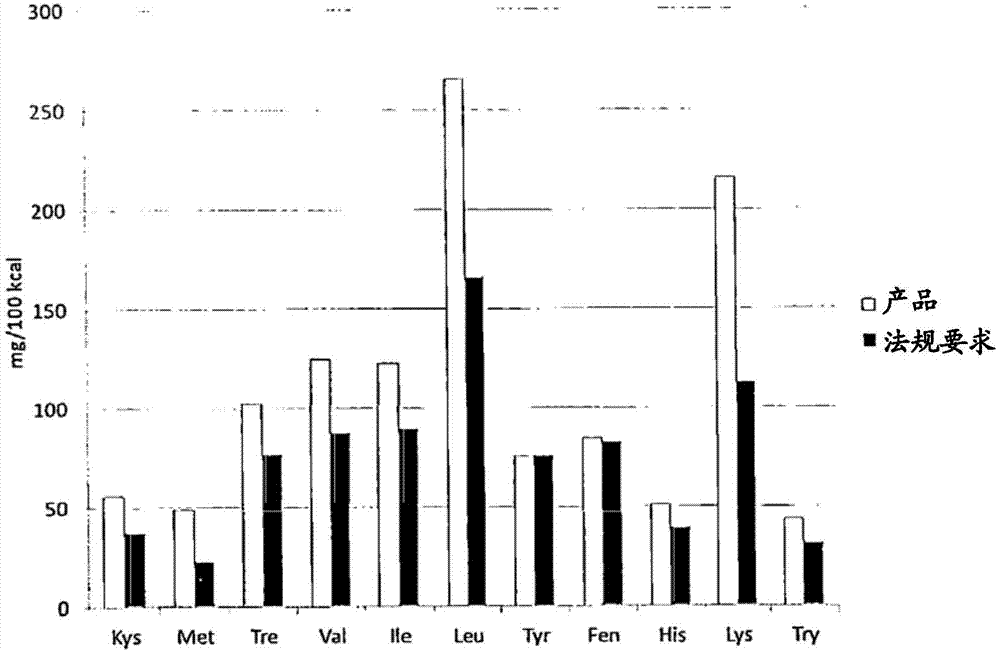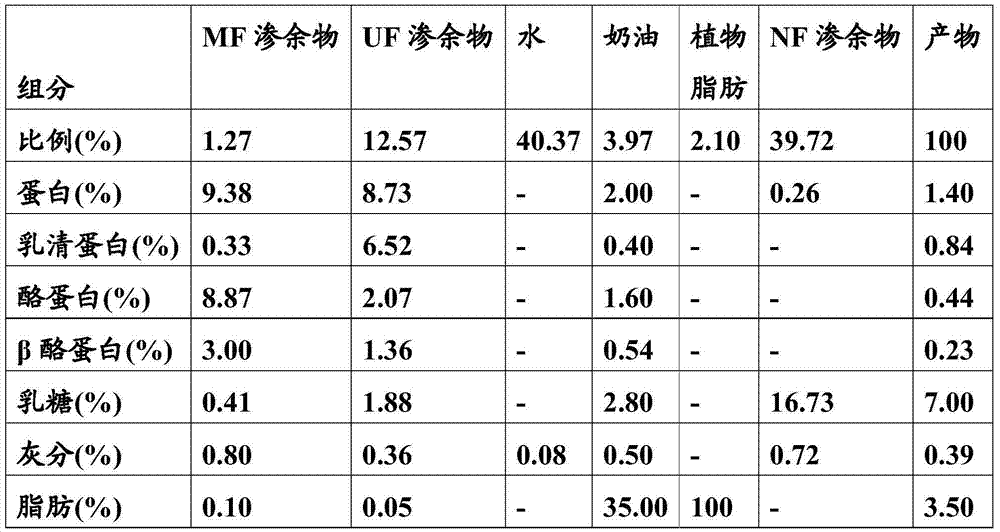Method for producing a milk product
A technology for infant formula products and lactose, which is applied to dairy products, other dairy products, milk preparations, etc., and can solve the problems of complex process, high cost and energy consumption
- Summary
- Abstract
- Description
- Claims
- Application Information
AI Technical Summary
Problems solved by technology
Method used
Image
Examples
Embodiment 1
[0063] Skim milk (1000 L) was microfiltered through a polymer filter membrane (Synder FR) with a pore size of 800 kDa. Filtration temperature is 12°C. The milk was concentrated with a concentration factor of 3.3, followed by diafiltration. In the diafiltration step, 1.5 times the amount of water was added to the microfiltration retentate. Water was added at the same rate as the permeate was collected. This yielded 300L microfiltration retentate and 2200L microfiltration permeate.
[0064] The microfiltration permeate was concentrated to a dry matter content of 12% by ultrafiltration using a 10 kDa membrane (Koch HFK-131). This yielded 50L of ultrafiltration retentate and 2150L of ultrafiltration permeate. The ultrafiltration permeate was further concentrated by nanofiltration to a dry matter content of 20%, followed by diafiltration. In the diafiltration step, 1.5 times the amount of water was added to the nanofiltration retentate. Water was added at the same rate as the...
Embodiment 2
[0069]Skim milk (1000 L) was heat treated by different methods (65°C to 95°C, 15s to 10min) before the microfiltration step. Heat treatment of skim milk denatures β-lactoglobulins from 1 to 90% and α-lactalbumin from 0 to 26%.
[0070] Heat treatment at 72°C for 15 s denatured β-lactoglobulin and α-lactalbumin to less than 10%. Heat treatment at 80°C for 15 s denatured β-lactoglobulin by 14% and α-lactalbumin again by less than 10%. Heat treatment at 90° C. for 15 s already denatured β-lactoglobulin by 35%, and the denaturation of α-lactalbumin remained unchanged. Only undenatured whey protein permeates through the microfiltration membrane, so a prior heat treatment can be used to influence the protein composition of the microfiltration permeate.
Embodiment 3
[0072] According to Table 2, an infant formula was formulated from the UF retentate and NF retentate obtained in Example 1, together with skimmed milk, cream and vegetable fat. The whey / casein ratio used in the recipe is 60 / 40. The energy content of the formula is 65kcal / 100g. 17% of the protein in the formula is beta casein.
[0073] 53% of the casein in the formula is beta casein.
[0074] Table 2. Composition of infant formula products
[0075] components
PUM
 Login to View More
Login to View More Abstract
Description
Claims
Application Information
 Login to View More
Login to View More - R&D
- Intellectual Property
- Life Sciences
- Materials
- Tech Scout
- Unparalleled Data Quality
- Higher Quality Content
- 60% Fewer Hallucinations
Browse by: Latest US Patents, China's latest patents, Technical Efficacy Thesaurus, Application Domain, Technology Topic, Popular Technical Reports.
© 2025 PatSnap. All rights reserved.Legal|Privacy policy|Modern Slavery Act Transparency Statement|Sitemap|About US| Contact US: help@patsnap.com



